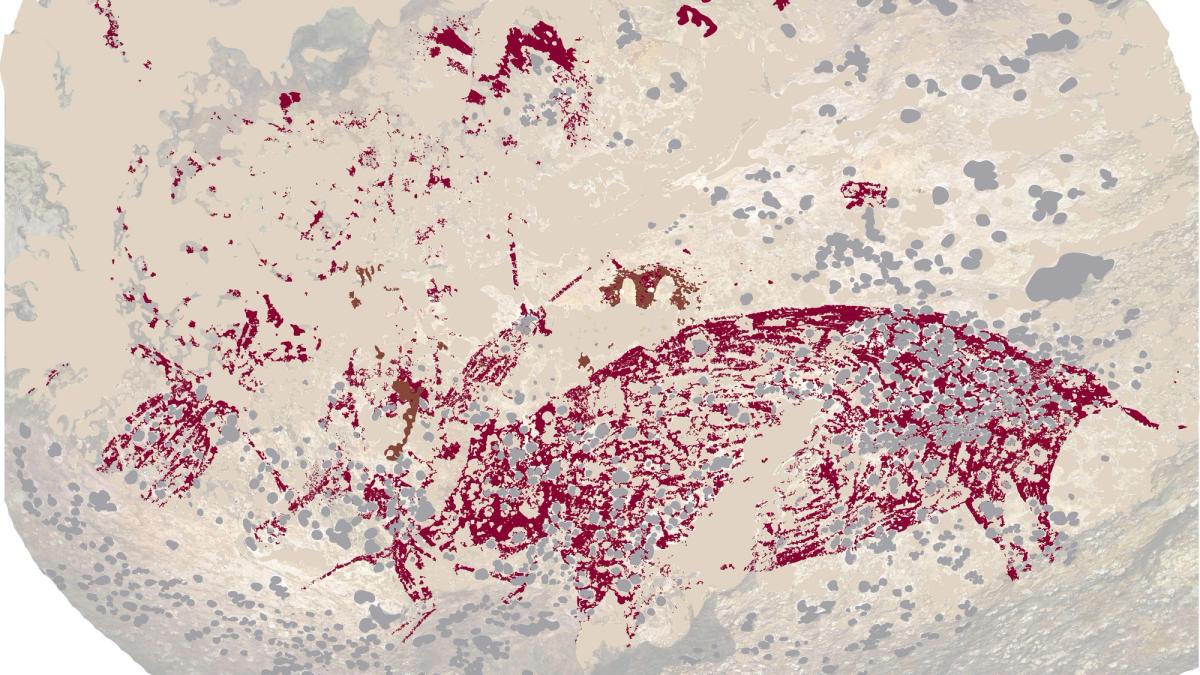The world’s oldest figurative paintings, showing a pig and three humans, have been discovered on the ceiling of a limestone cave on the Indonesian island of Sulawesi, says a team of Australian and Indonesian scientists who unearthed the ancient art. The paintings unearthed in the Leang Karampuang cave are at least 51,200 years old, according to a research paper published in the Nature journal.
“This narrative composition, which depicts human-like figures interacting with a pig, is now the earliest known surviving example of representational art, and visual storytelling, in the world,” say the scientists, adding: “Our findings show that figurative portrayals of anthropomorphic figures and animals have a deeper origin in the history of modern human (Homo sapiens) image-making than recognised to date.”
Adam Brumm, an archaeologist from Griffith University in Australia who collaborated on the discovery, told Reuters: “This discovery of very old cave art in Indonesia drives home the point that Europe was not the birthplace of cave art, as had long been assumed.” Archaeologists uncovered a wealth of Palaeolithic drawings and engravings in the Chauvet cave in southern France in 1994 for instance.
The team at the Leang Karampuang site used a new technique to determine the minimum age of the paintings, employing a laser to date a type of crystal called calcium carbonate that had formed naturally on top of the figures depicted. Maxime Aubert, a specialist in archaeological science at Griffith University in Australia, said: “The method is a significant improvement over other methods and should revolutionise rock art dating worldwide.”
The scientists say that “to demonstrate the efficiency and reliability of this [laser] technique, we re-dated what was previously the oldest known surviving pictorial narrative, a rock art scene at [nearby cave] Leang Bulu’ Sipong”, which was considered to be the oldest cave art in the world. At Leang Bulu’ Sipong, there are “several figurative paintings of human-like figures interacting with Sulawesi warty pigs and dwarf bovids”. Using the new technique, the rock art scene at Leang Bulu’ Sipong was found to be at least 4,040 years older, dating from 48,000 years ago.
In 2014, meanwhile, scientists found art depicting an unknown animal in November 2018 in the cave of Lubang Jeriji Saléh on the Indonesian Island of Borneo; this depiction was thought to be more than 40,000 years old.


